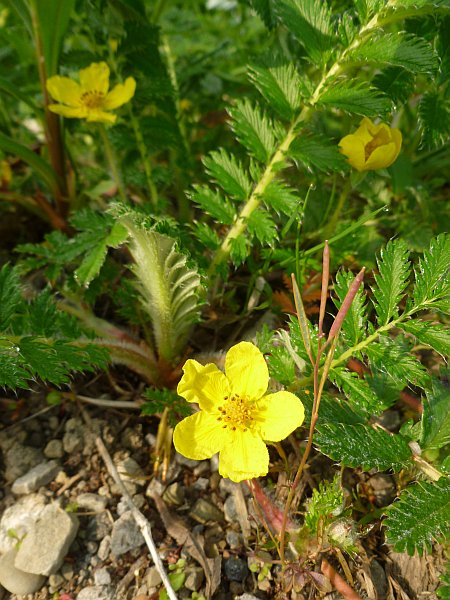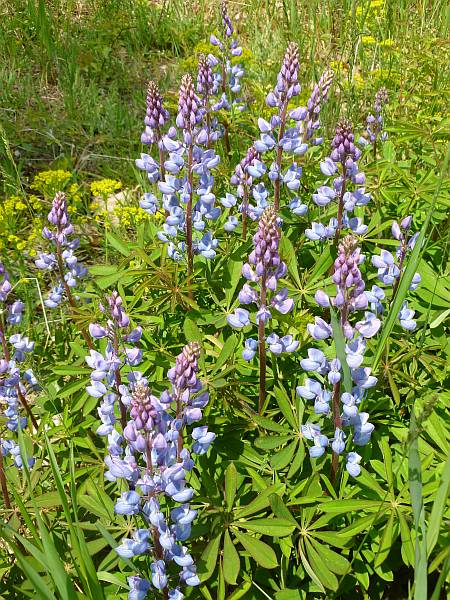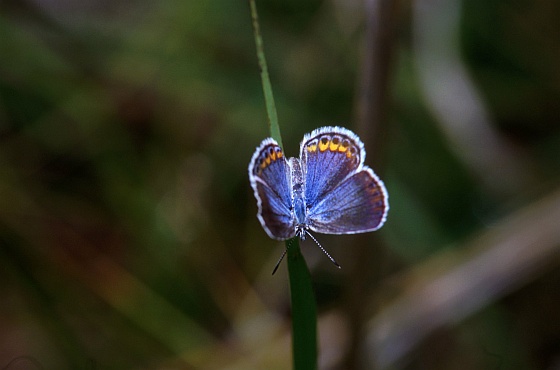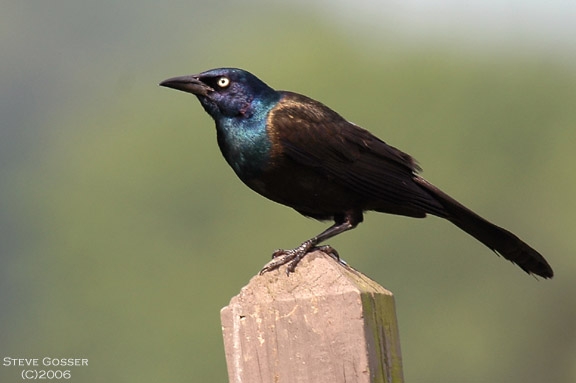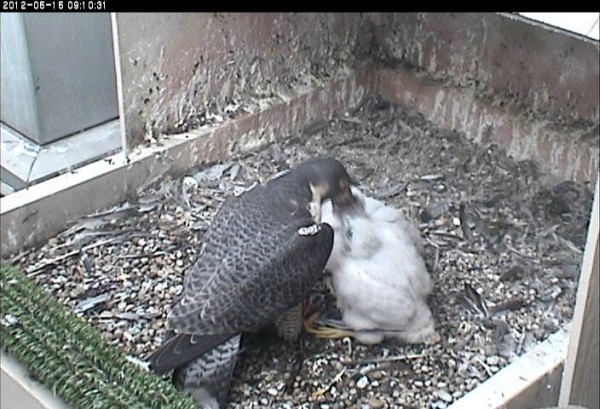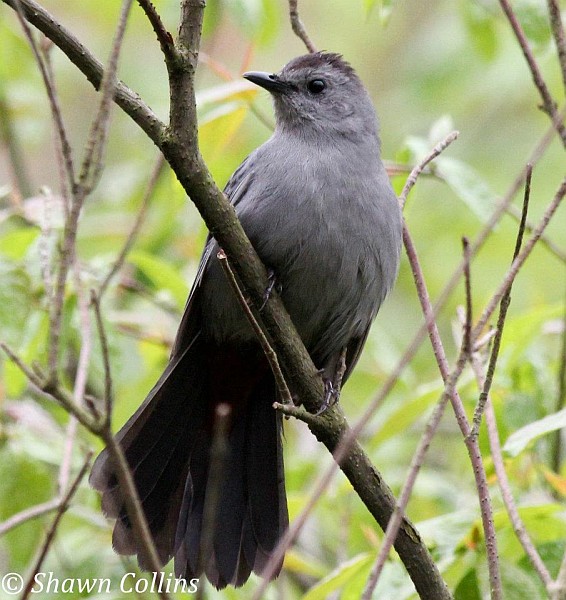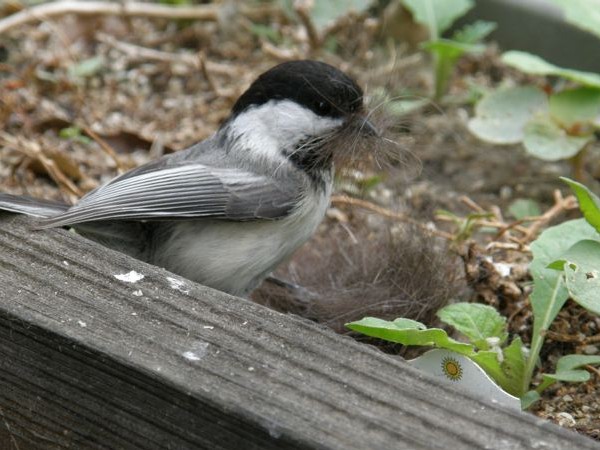
21 May 2012:
Last week several families of chickadees fledged in Schenley Park. Because they keep their nests well hidden, I had no idea so many chickadees were nesting until I encountered hotspots of begging babies.
What does a chickadee nest look like? Marcy Cunkelman sent me photos of one in her yard.
The Nest:
Chickadees build their nests in cavities using old woodpecker holes, birdhouses, or holes they excavate for themselves in soft rotting wood. It takes a pair of chickadees 7-10 days to excavate a new hole 5″ deep. While digging they carry the chips away from the site. Marcy’s chickadees saved a lot of time by using the PVC-pipe birdhouse she provided.
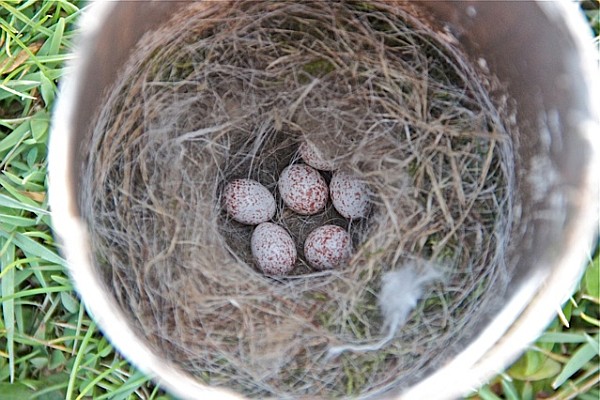
When the nesting hole is complete, the female spends 3-4 days lining it with wool, hair, fur, moss, feathers, fuzzy insect cocoons, and cottony fibers(*). When it’s soft and cozy she lays 5-10 eggs. Marcy’s chickadee laid six.
The Eggs
The eggs are 15.2 x 12.2 mm — smaller than a dime! The female begins incubation after laying the next-to-last egg and incubates them alone until they hatch in 12-13 days. Her mate feeds her on the nest so she doesn’t have to leave the eggs.
Nestlings
When the eggs hatch the babies are naked and sightless but soon begin to grow feathers as shown below. At this stage their big wide mouths are their most noticeable feature. The babies keep their parents busy filling those mouths.
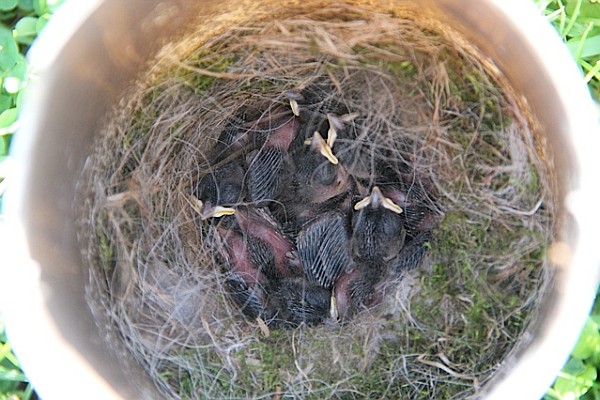
At 12 days old, the babies look like chickadees and are the same size as the adults. They can fledge at this age if the nest is attacked but will wait until they’re 16 days old if the nest is safe. Here the six babies are just a little too young to fledge. They already look like chickadees. Very cute!
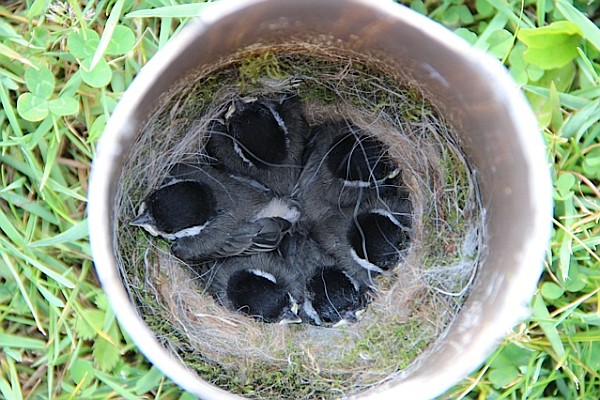
Normally the entire brood fledges within 24 hours. Marcy says hers fledged while she was out for the day.
Chickadees usually raise only one brood per year so this pair is done for now — except that they have a big job ahead of them. They have to teach six juveniles how to stay safe.
(photos by Marcy Cunkelman. (*) Nesting information is from the Petersen Field Guide to Birds’ Nests by Hal H. Harrison)
p.s. Black-capped and Carolina chickadees have mostly separate ranges (north and south) but on the chickadee border they hybridize. Marcy’s house is on the chickadee border so she can’t say for sure which species nests here.
